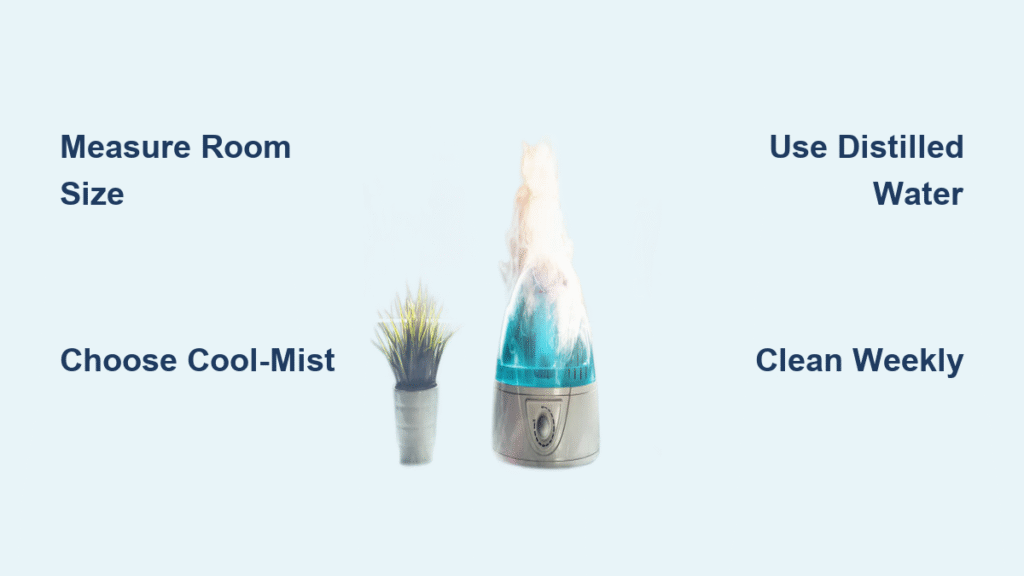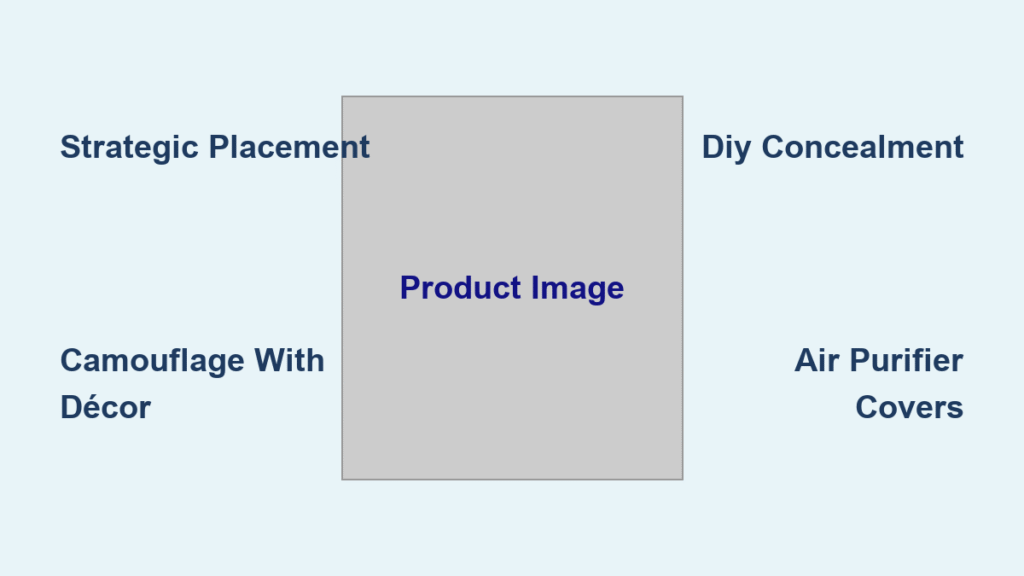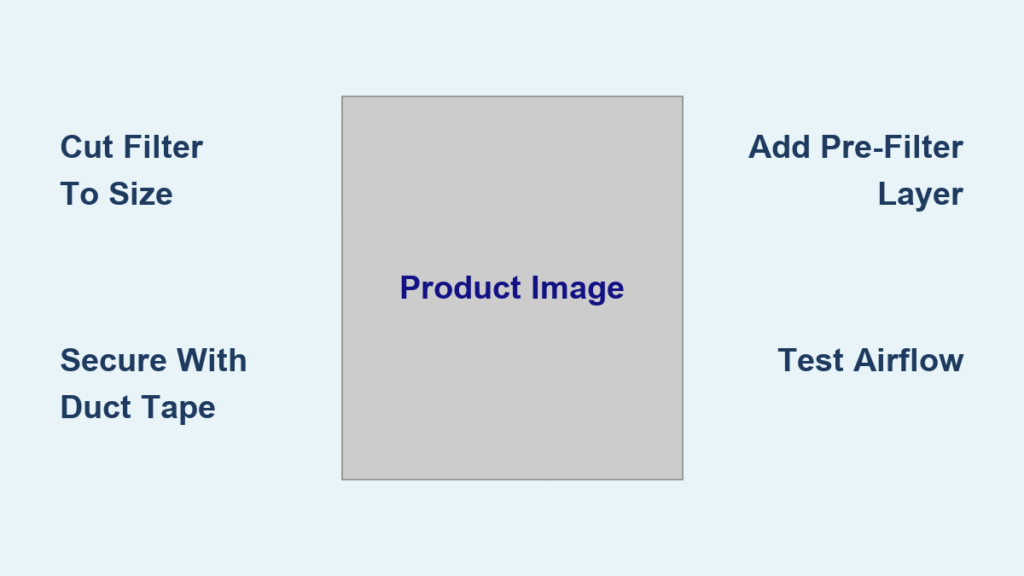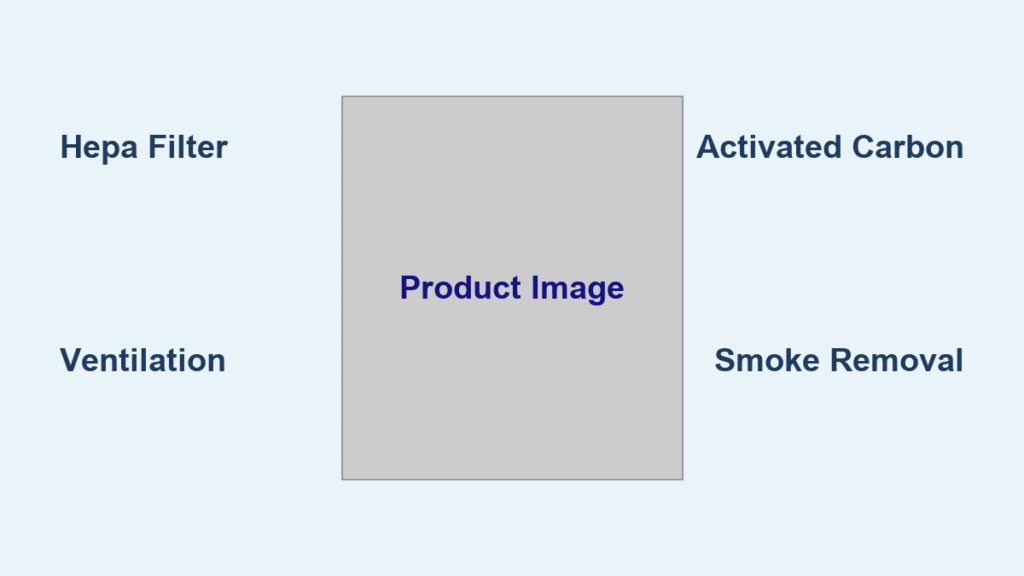Your lips crack the moment you step indoors. Your wooden guitar warps every winter. Your kids wake up congested. Sound familiar? You’re not alone—millions face these dry-air battles each heating season. Learning how to choose a humidifier that fits your specific needs transforms your space from a static-charged desert into a comfortable, healthy haven. This guide walks you through every critical decision so you avoid costly mistakes and breathe easier from day one. Stop guessing and start solving your humidity problems with science-backed solutions.
Why 30-50% Humidity Is Your Health Lifeline
Ignoring indoor humidity risks more than dry skin—it creates a breeding ground for winter illnesses. When air drops below 30% relative humidity, your nasal passages dry out, weakening your natural virus defenses. EPA studies confirm maintaining 30-50% humidity slows transmission of airborne viruses like influenza and SARS-CoV-2 while reducing respiratory irritation. But overshooting this sweet spot invites disaster: exceeding 50% humidity triggers dust mite explosions and mold colonies in hidden corners.
For freezing climates, cap humidity at 30-40% to prevent window condensation that rots frames. Your wooden furniture breathes easier too—floors stop creaking, pianos stay tuned, and leather couches resist cracking. Houseplants perk up noticeably within days of proper moisture levels. Remember: your humidifier isn’t just comfort equipment—it’s a frontline defense against winter misery.
Ultrasonic vs. Evaporative: Real-World Performance Breakdown
:max_bytes(150000):strip_icc()/humidifiers-ultrasonic-vs-evaporative-humidifiers-1908160-final-5c93ceaa4cedfd0001f1695a.png)
Ultrasonic cool-mist humidifiers dominate bedrooms for good reason. A ceramic plate vibrating 1.7 million times per second creates invisible moisture at library-quiet 26-32 decibels—perfect for undisturbed sleep. But here’s the catch: tap water minerals become white dust coating your nightstand and electronics. Always use distilled water with these units to avoid this frustrating cleanup.
Evaporative models solve the dust problem through physics. A fan pulls air through a wet wick, releasing only the moisture the air can hold—a self-limiting process preventing dangerous over-humidification. You’ll hear the fan (35-45 dB on low), but gain mineral-free operation with tap water. Factor in $6-25 monthly wick replacements—essential for maintaining performance. Skip steam vaporizers entirely if kids or pets roam freely; their boiling water creates serious burn hazards and triples your electricity costs.
Match Tank Size to Your Room’s Exact Dimensions

Buying oversized humidifiers causes window condensation that leads to mold—yet undersized units force constant refilling. For bedrooms under 400 square feet, choose 1-1.6 gallon tanks delivering 12-24 hours runtime. Living areas up to 1,000 square feet need 2-3 gallon units. Open-concept spaces demand 4-6 gallon consoles.
Never trust manufacturer square footage claims blindly. Multiply your room’s length × width, then add 20% if ceilings exceed 8 feet. A 300 square foot bedroom with 10-foot ceilings actually requires coverage for 360 square feet. Place your unit centrally on an elevated surface—not directly on carpet or hardwood—to prevent moisture damage while ensuring even distribution.
Critical Placement Mistakes That Cause Damage
- Window condensation: Oversized units hitting cold surfaces
- Carpet saturation: Units sitting directly on flooring
- Electronics corrosion: Ultrasonic white dust settling on devices
- Uneven coverage: Corners left dry while center becomes damp
Non-Negotiable Features for Safe Operation
Skip units without these essentials—they’re false economy:
- Digital humidistat: Auto-shutoff at your target humidity (30-50%)
- Dry-tank sensor: Prevents motor burnout when water runs low
- Top-fill design: Saves daily wrestling with awkward tank openings
- 1+ gallon capacity: Reduces bedroom refills to once daily
- ≤35 dB noise rating: Ensures undisturbed sleep
For families, prioritize cool-mist models only—AAP warns against warm-mist units due to scalding risks. Allergy sufferers should seek evaporative models or UV-sterilized tanks that actively combat microbes. If you own valuable wood instruments or furniture, Wi-Fi control lets you adjust humidity remotely before returning home.
Child & Pet Safety Protocols You Must Follow
Never place warm-mist humidifiers in kids’ rooms—boiling water reservoirs create severe burn hazards if knocked over. The American Academy of Pediatrics specifically recommends cool-mist ultrasonic or evaporative units for nurseries. Position units out of reach on sturdy furniture, not on the floor where curious hands might touch them.
For asthma sufferers, exceeding 50% humidity worsens symptoms by feeding allergens. Choose units with precise humidistats that maintain 40-45%—ideal for respiratory health without encouraging mold. Immunocompromised households should invest in evaporative models with antimicrobial wicks or UV-C sterilization to prevent pathogen growth inside the tank.
15-Minute Weekly Maintenance That Prevents Health Hazards
Your humidifier becomes a bacteria factory without this routine: Daily, empty and rinse the tank with fresh water. Weekly, deep-clean with equal parts white vinegar and water—scrub crevices where pink mold hides. Never mix vinegar and bleach; this creates toxic chlorine gas.
Ultrasonic users must use distilled water to prevent scale buildup that clogs mist output. Evaporative models require wick replacements every 1-3 months ($30-60 annually). Check tanks weekly for slimy biofilm—a sign you’re skipping cleanings. Pro tip: Run vinegar cycles before storing units seasonally to prevent musty odors.
True Cost of Ownership Beyond the Purchase Price

Entry-level $19 humidifiers lack humidistats and burn out fast. Mid-range $50-80 models deliver reliable performance with auto-shutoff. Premium $90-110 units add smart features that justify their cost through convenience and longevity.
Calculate hidden expenses before buying:
– Ultrasonic: $3-8/month for distilled water + $0.75 electricity
– Evaporative: $30-60/year for wick replacements + $1.20 electricity
– Warm-mist: $6-12/month electricity (triple the cost!)
– HVAC systems: $400-1,600 installation but zero refills
For allergy sufferers, factor in costs for HEPA filters or UV lamp replacements. Whole-house systems pay off long-term despite high upfront costs—no daily refills means consistent humidity while you sleep.
7-Step Decision Framework for First-Time Buyers
Still overwhelmed? Follow this foolproof sequence:
- Measure accurately: L × W × 1.2 (for 10+ ft ceilings)
- Prioritize safety: Cool-mist for homes with kids/pets
- Match capacity: 1 gal tank per 400 sq ft (minimum)
- Verify features: Humidistat + auto shut-off are non-negotiable
- Assess maintenance: Willing to replace wicks? → evaporative
- Calculate true cost: Include filters, distilled water, electricity
- Test noise: Run units in-store at night setting
This process eliminates 90% of common humidifier failures before purchase. Always check return policies—many brands offer 30-day trials specifically because sizing mistakes are so common.
Top Models for Your Specific Living Situation
Large bedrooms needing smart control: Levoit LV600S ($90-110) delivers Wi-Fi scheduling, 1.5-gallon capacity, and quiet operation. Its dual mist modes adjust for seasonal needs—just disable warm-mist around children.
Nurseries with safety concerns: Dreo HM311S ($50) provides cool-mist safety, adjustable night-light, and top-fill convenience. Its 1.5-gallon tank lasts all night with auto-shutoff at 55% humidity.
Allergy sufferers: Blueair H35i ($150) combines evaporative technology with UV-C sterilization to destroy mold spores. The dishwasher-safe tank eliminates cleaning hassles.
Whole-house coverage: Aprilaire 600 ($220-300 unit) integrates with HVAC for silent, season-long operation—worth the $400+ installation for homes over 1,500 sq ft.
Costly Errors That Turn Humidifiers Toxic
Buying oversized units creates window condensation that invites black mold growth within weeks. Ignoring wick replacement schedules turns evaporative humidifiers into bacteria dispensers—stale tanks develop pink slime within 48 hours. Using tap water in ultrasonic models coats nearby electronics in conductive mineral dust that causes short circuits.
Never let water sit stagnant for over 24 hours. Always use a waterproof mat under units to protect flooring. And never exceed 50% humidity—your hygrometer should be your most trusted household tool. These simple precautions transform your humidifier from a health hazard into your home’s invisible wellness guardian.
Choose your humidifier once, breathe easier all winter. Measure your space precisely, match the humidifier type to your household’s needs, and commit to the 15-minute weekly cleaning ritual. Your skin, sinuses, and wooden treasures will thank you within days. For ongoing protection, pair your new unit with a $15 hygrometer to monitor that critical 30-50% humidity sweet spot.

